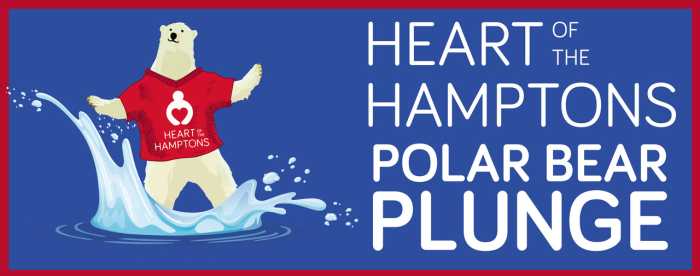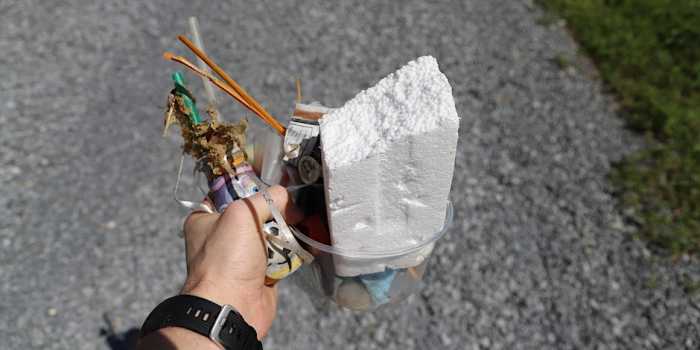Fish Tales: East End Shark Researchers Cast a Wide Net After Attacks
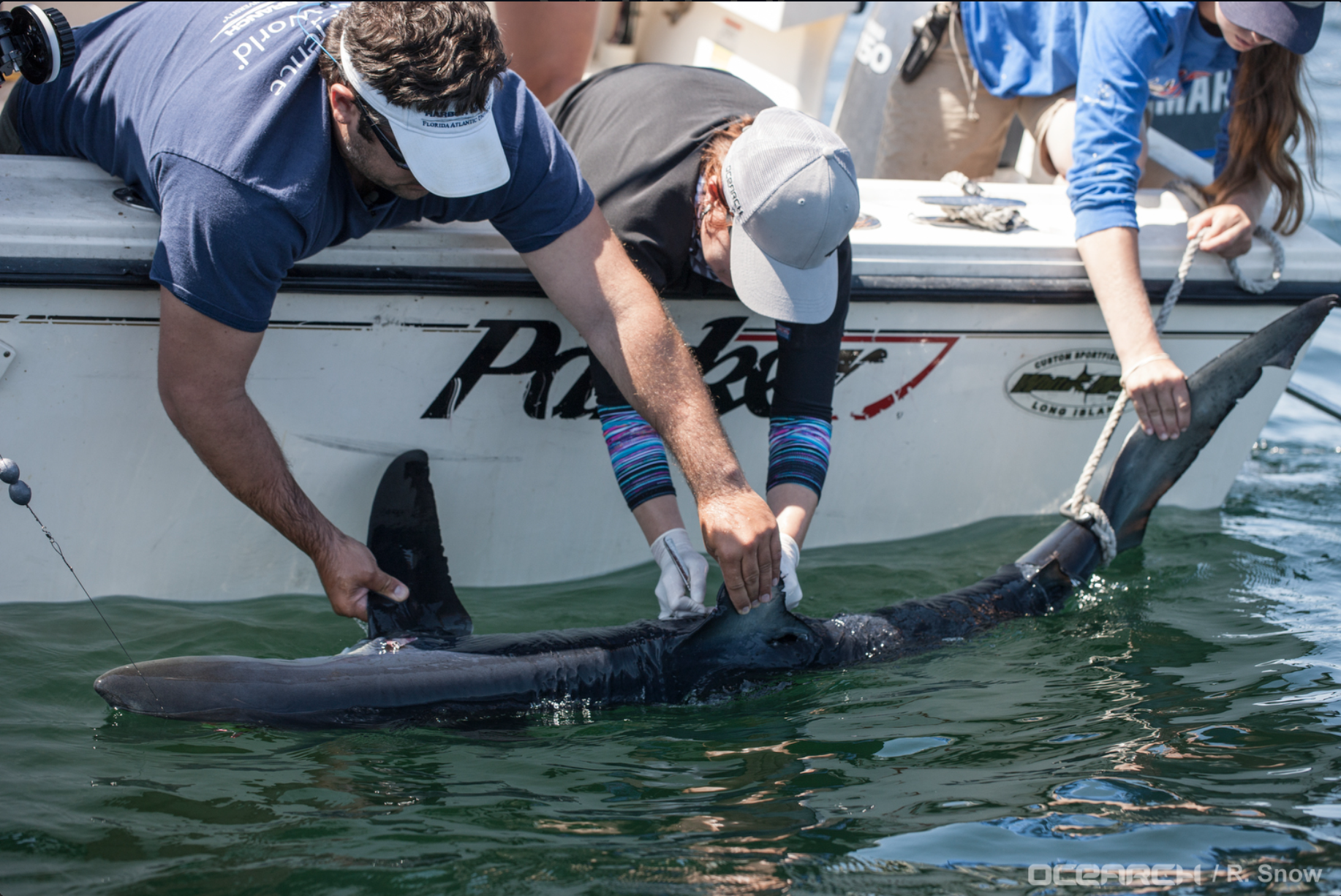
Researchers who made a splash when they revealed a great white shark nursery was found off the coast of Long Island in 2016 are continuing efforts to study the fearsome creatures to help the public better understand sharks, especially after recent attacks over this summer and last.
The ongoing research comes amid five shark bites reported off the Hamptons and Fire Island on July 3 and 4 that have caused heightened fears of the ocean’s apex predators, although the exact species of sharks involved in those attacks remains unclear. Even before these incidents, sharks have long been seen as unwelcome guests by beachgoers. So why is it important to protect them?
“We need sharks to play their role: to keep populations of their prey in check,” says Greg Metzger, field coordinator at South Fork Natural History Museum’s Shark Research and Education Program. As apex predators, they stand at the top of the food chain. By regulating their prey populations, sharks maintain a balance of marine life, playing a vital role in ocean health. Without sharks, “the entire ecosystem would fall apart,” says Metzger.
Since 2015, South Fork Natural History Museum’s (SoFo) Shark Research and Education Program has used cutting-edge electronic tagging technology to track sharks off Long Island.
“It’s like a satellite system that’s up there to track animals worldwide,” says Dr. Tobey Curtis of the National Oceanic and Atmospheric Administration (NOAA), who collaborates with SoFo.
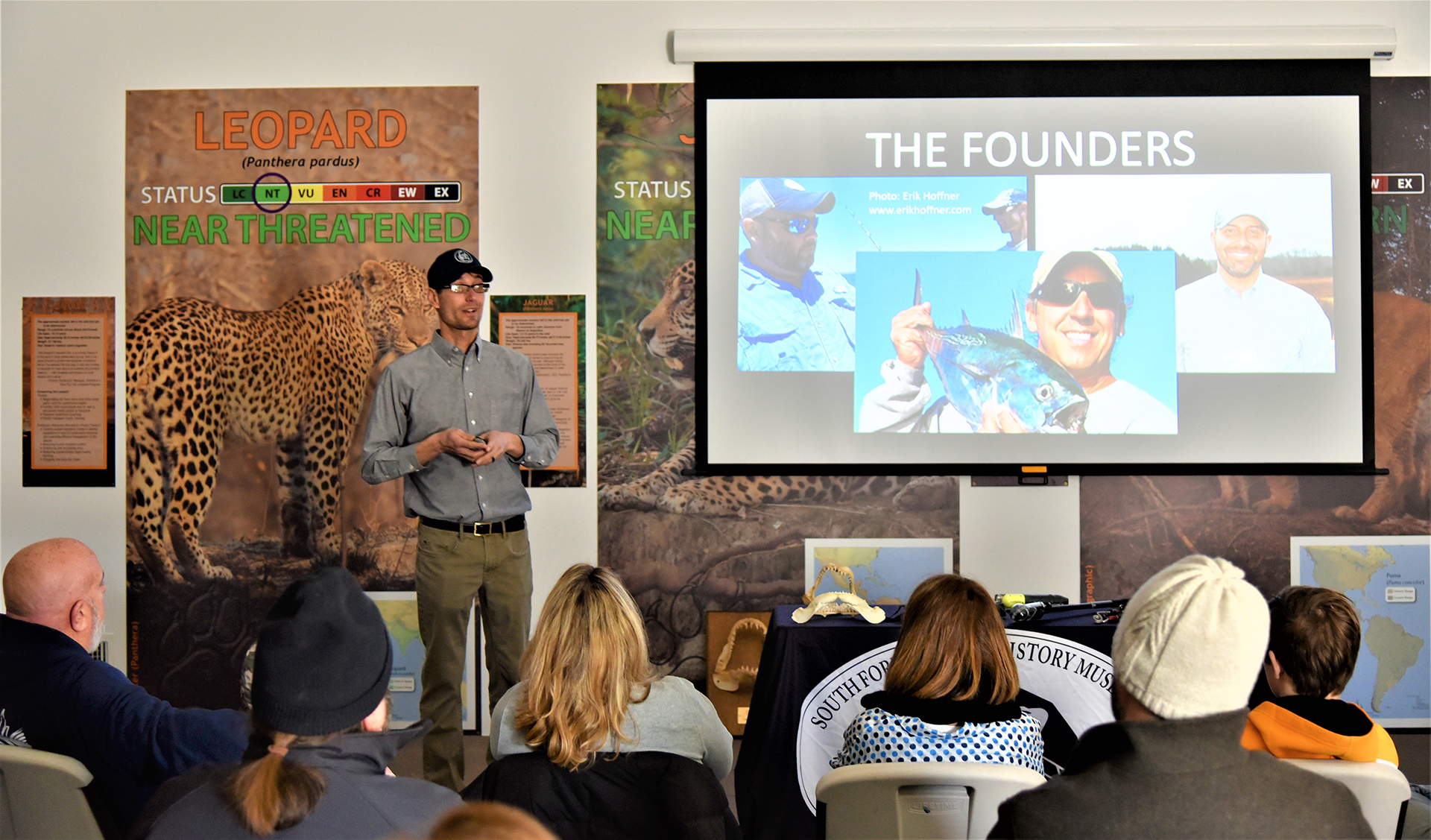
The museum’s research relies mainly on the pop-up satellite tag, which attaches to a shark near its dorsal fin. The device — which is about the size of a mini flashlight — stays on the shark for 28 days and logs location, depth and water temperature. After the 28 day period, the tag floats to the surface and transmits this data to the Argos satellite system.
“We can use the data that’s transmitted to the satellite to reconstruct the shark’s movement from the previous month,” says Dr. Curtis. “In three dimensions, so not just where the shark is, but how deep it was swimming and what water temperature it was swimming in. It’s a very informative, very powerful tool to study shark ecology.”
SoFo also used a longer-term “internal acoustic tag” — which tracks a shark for 10 years — in collaboration with Ocearch, a global nonprofit devoted to shark tracking. SoFo is also currently collaborating with Stony Brook University in a four-year study led by Dr. Bradley Peterson.
But how is shark location data useful to humans?
“If you track enough sharks,” according to Dr. Curtis, “you start to see the patterns.” SoFo’s data on shark migration and habitat patterns is important for shark conservation efforts and swimmer safety.
“We’re starting to gather enough information to tell beach safety officials and marine resource managers where each of these shark species like to hang out — what water temperature, what depth, that’s very important for conservation and resource management.”
Three-dimensional shark tracking also provides comprehensive shark data for beach safety that drones can’t catch.
“The sharks from our tagging data are only at the surface for a very small fraction of time, probably less than 10%,” says Metzger, who explains that we can’t rely completely on visual observations collected through drones, lifeguards, or helicopters. Shark tagging allows SoFo to estimate the locations of shark populations at all depths, providing more reliable data for beaches.
The tagging system also allows SoFo to track sharks’ journeys beyond New York waters.
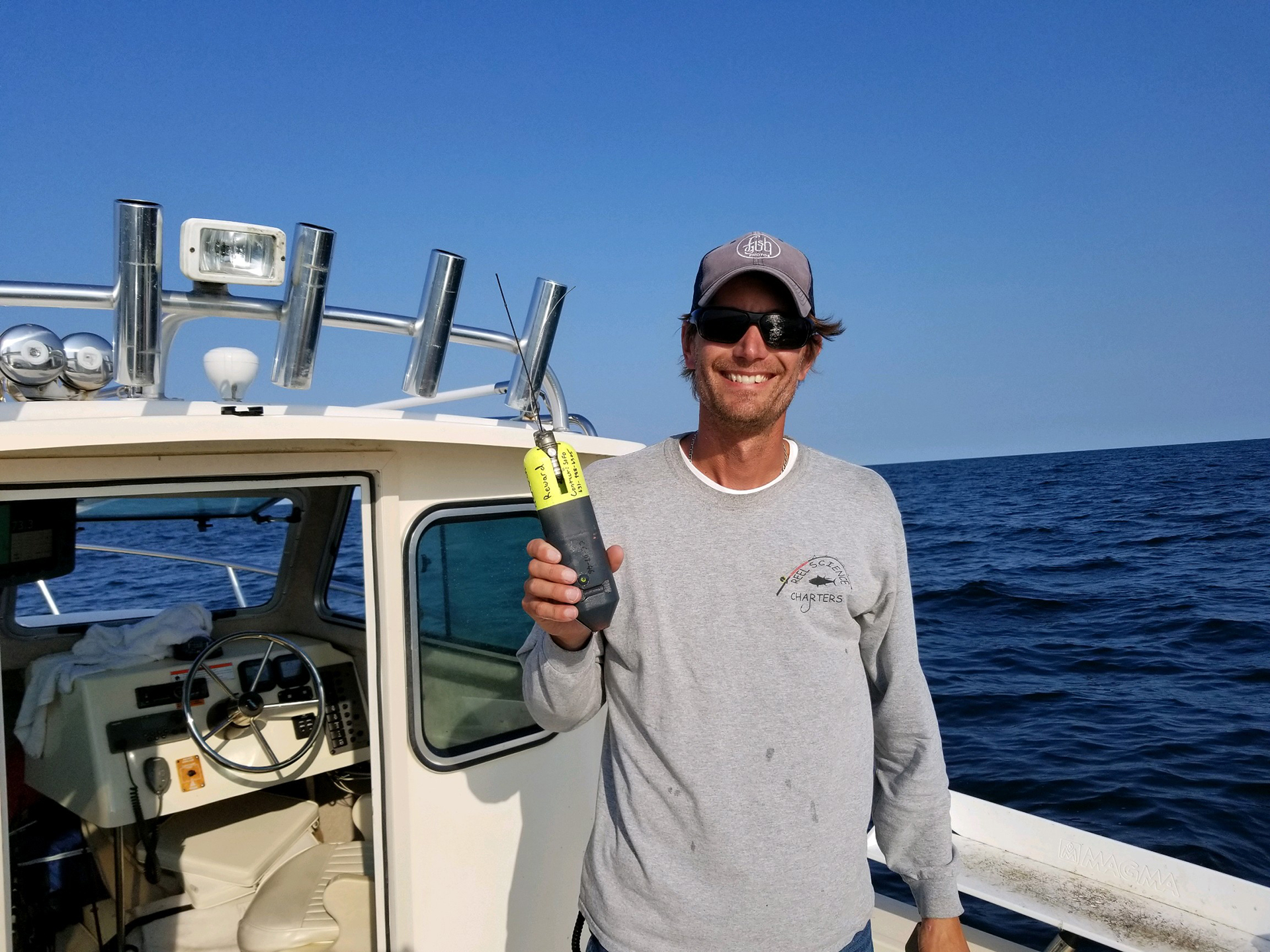
“It turns out they spend most of the summer off Long Island from about June through October,” says Dr. Curtis. “When the water temperature starts cooling off in the fall, they migrate south and they spend their winter time mainly off the Carolinas. They’re very picky about where they like to hang out.”
There are even migration patterns within the season. Along the South Shore of Long Island, waters warm from west to east throughout the summer. According to Metzger, baby white sharks spend May and June off Nassau County beaches and July, August and September off Suffolk County beaches. As the summer progresses, white sharks migrate east toward Montauk, escaping warming waters and following prey. On the other hand, spinner and black tip sharks prefer warmer water.
“Different species of sharks prefer different water temperatures and they seek them out as Mother Nature provides those water temperatures,” says Metzger.
The research has also shed light on the impact of climate change on sharks. The tags’ temperature data allows SoFo to predict when certain species will leave an area altogether because of warming waters.
So what is the timeframe for the mass shark exodus, ask optimistic Hamptons swimmers? Well, it depends on the shark.
“We have some preliminary data that suggests when the water temperature exceeds 80 degrees at the surface, the white sharks will generally move out,” says Dr. Curtis. “But … when the water gets warmer, southerly species will start moving in.”
Some species are already starting to move out.
“(In) the next 50 to 80 years, we could see some pretty significant changes in the sharks off Long Island,” says Dr. Curtis.
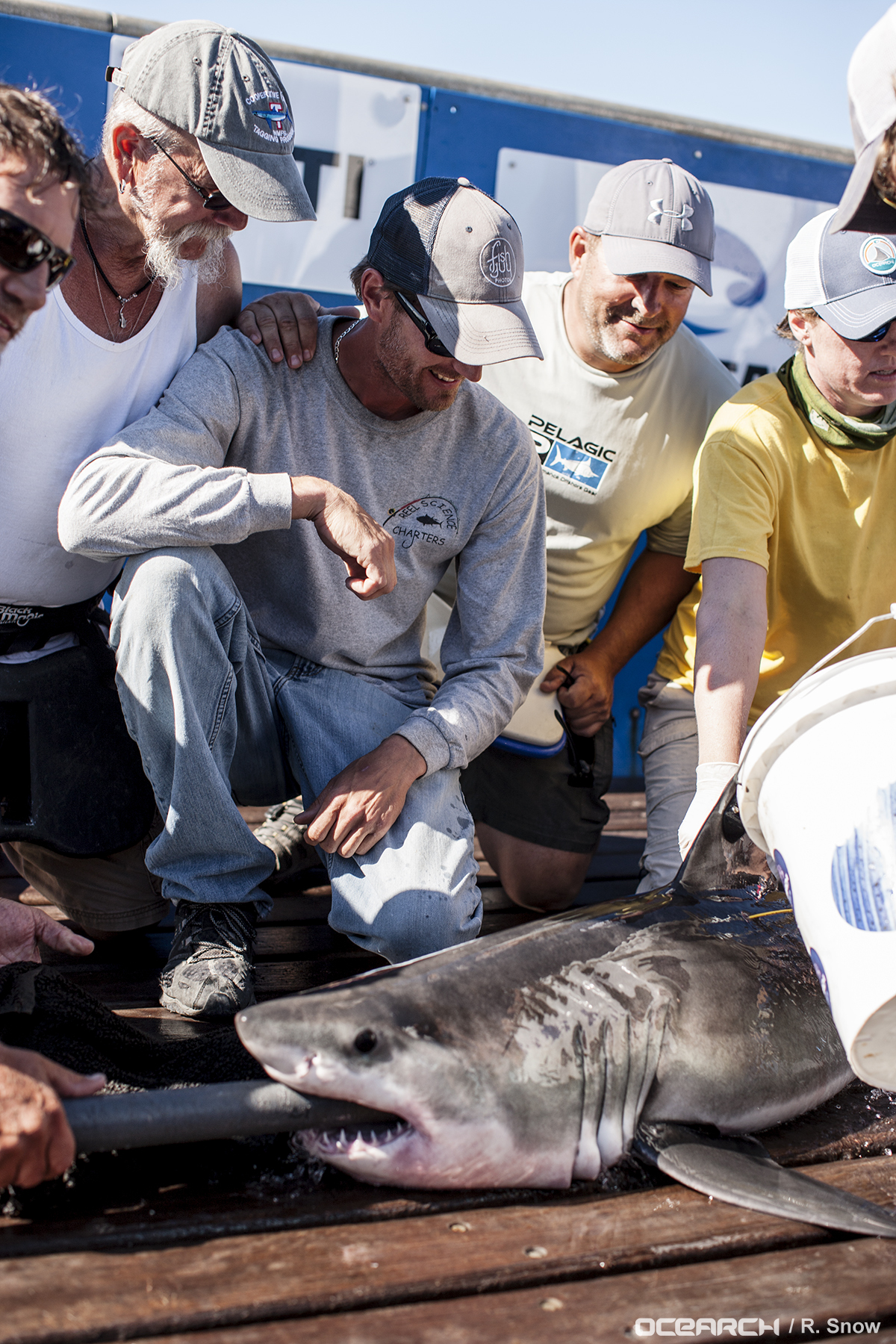
Long Island is deemed a shark nursery for two different species: white sharks and sand tiger sharks. SoFo’s research focuses on great white shark pups, or the “young of the year,” which refer to sharks less than a year old and typically about four feet long. According to Metzger, who frequently encounters baby sharks of many other species, Long Island is likely a nursery area for many shark species.
Sharks, unlike most animals, don’t care for their young. The pups are left to fend for themselves from birth.
“It’s a possibility that some of the negative interactions over the last few years are baby sharks exploring their environment. That may have been the very first time the shark has ever encountered a person, because it was just born a month ago,” says Metzger, who points out that he’s observed many baby sharks biting seaweed and plastic floats.
“They explore what are potential food items by tasting, by biting— they don’t have fingers to be able to feel…What do baby humans do? They put everything in their mouths. And so it’s possible that some of these negative interactions were simply baby sharks exploring what is and is not a food item,” Metzger explains.
SoFo has tagged 33 juvenile white sharks in the last several years, 20 of which were tagged in a collaboration with Ocearch.
Overall, conservation efforts have contributed to a healthy environment for sharks. Reducing the application of fertilizers, reducing nitrogen plumage from cesspools, and reducing pollution and littering have helped, according to Metzger.
“The health of the environment and the conservation efforts of the past have helped recover the South Shore of Long Island (by maintaining) a productive ecosystem,” says Dr. Curtis, “and sharks are just part of that healthy ecosystem.”






